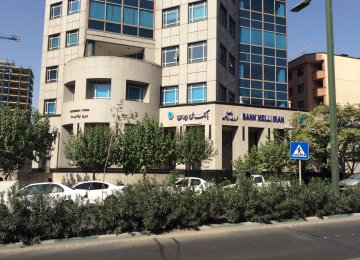Iranian banks will have to adjust to tougher international regulations and may need to offload non-performing loans into a “bad bank” to pick up where they left off when sanctions were imposed almost four years ago.
The banks will be crucial to deal-making and cash flow as Iran seeks to win business from foreign firms and attract investment to upgrade its infrastructure now that curbs have been lifted on its banking, insurance, shipping and oil sectors.
They are expected to be able to link up with international lenders to process transactions within a matter of weeks following a deal with world powers earlier this month curbing Iran’s nuclear program.
The Road Ahead
But restrictions preventing US banks dealing with the country will remain in place and Iran’s banks will have to contend with a financial world very different from when they were cut off in 2012.
“Isolation of Iran’s money market from international markets resulted in the inability of the Iranian banks to coordinate with international developments,” said Ali Sanginian, chief executive of privately owned Amin Investment Bank, Reuters reported.
“This has led to these banks severely lacking in the areas of investment quality, capital adequacy, internal control and other safeguarding regulations in comparison to international standards,” said Sanginian, whose institution is Iran’s biggest investment bank with more than $1 billion of assets under management.
Many of Iran’s banks struggled with bad debt during the sanctions era. The situation was compounded by several banks having exposure to the country’s property market, which turned sour in 2012 leaving problem loans in the system.
Official data showed the ratio of non-performing loans to total loans was 13.4 % in the Iranian month ending June 21, 2015. Market estimates point to nearly double that figure with the equivalent of $40 billion at the top end of estimates for non-performing loans.
“The biggest issues Iranian banks face is the high level of non-performing loans and the low capital buffers,” said Constantinos Kypreos, senior analyst at ratings agency Moody’s Financial Institutions Group.
Kypreos said the Iranian banking sector remains undercapitalized with a reported 2014 capital adequacy ratio of 6.8 % versus a regional average capital adequacy ratio of over 13 to 14 %.
“(With) concerns about the under-reporting of problematic loans, the sector is in need of substantial new capital,” he added.
Banks are also expected to take painful write-downs on many of the direct equity investments (DEIs) on their balance sheets.
“Today’s market value of these investments is much lower than what is shown on the books of respective banks,” said Parviz Aghili, chief executive of privately owned Tehran-based Middle East Bank.
“If we were to set off ‘doubtful loans’ and ‘DEIs’ of a bank against its capital then many Iranian banks will end up with a negative capital.”
Ali Amiri of ACL, an investment management firm focused on Iran with operations in Tehran, adds that regulators may be able to help banks on that front.
“Introducing a bad bank where all these loans are cleaned out and put into that bank ... is something that is being studied and looked at by the regulators inside Iran and seems to be an option,” he said. “The situation is not dire.”





